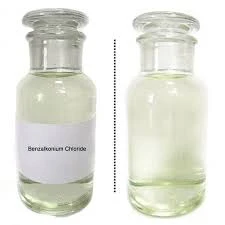chloromethyl isothiazolinone
Chloromethyl Isothiazolinone An Overview
Chloromethyl isothiazolinone (CMI) is a synthetic organic compound primarily used as a preservative in various industries, including cosmetics, personal care products, household cleaners, and industrial applications. Its chemical structure features a six-membered ring containing both nitrogen and sulfur atoms, characteristic of isothiazolinones, which are known for their biocidal properties. CMI is often employed in combination with methylisothiazolinone (MI), another isothiazolinone compound, to enhance antimicrobial efficacy and broaden the spectrum of activity against bacteria, fungi, and algae.
One of the critical attributes of CMI is its ability to inhibit the growth of microorganisms, making it a valuable ingredient in formulations prone to microbial contamination. This is particularly significant in products that contain water, as moist environments provide a conducive setting for bacterial and fungal growth. By incorporating CMI, manufacturers can extend the shelf-life of their products, ensuring safety and efficacy for consumers.
chloromethyl isothiazolinone

Despite its effectiveness, the use of chloromethyl isothiazolinone has raised health and environmental concerns
. Allergic reactions, including skin sensitization, have been reported among consumers exposed to products containing CMI. The European Union has placed restrictions on its usage in cosmetic products, particularly in leave-on formulations, due to these potential adverse effects. Regulatory bodies globally continue to evaluate the safety of CMI, leading some manufacturers to seek alternative preservatives that offer similar antimicrobial properties without the associated risks.In addition to personal care products, CMI is also utilized in industrial applications, including paints and coatings, adhesives, and metalworking fluids. Its effectiveness in preventing microbial growth helps companies maintain product integrity and comply with health standards. However, the rising consumer preference for natural and eco-friendly ingredients is prompting a shift in industry practices, with many brands exploring preservative-free formulations or using naturally derived alternatives.
As the conversation around safety and sustainability continues to evolve, chloromethyl isothiazolinone stands at a crossroads. While it remains an important preservative in various sectors, the growing demand for transparency and safer products challenges manufacturers to innovate. Balancing efficacy with consumer safety will be crucial in the future, leading to potential reforms in how CMI and similar compounds are used in products worldwide. In this context, ongoing research and development are essential to identify and promote safer alternatives while maintaining the quality and longevity of everyday products.
-
Pbtc Scale InhibitorPBTC: A Scale Protector for Industrial Water TreatmentNewsAug.05,2025
-
Organic Phosphonate: An Efficient Defender in the Field of Scale InhibitionNewsAug.05,2025
-
Hydrolyzed Polymaleic Anhydride: Green Pioneer in Scale Inhibition FieldNewsAug.05,2025
-
PAPEMP Polyamino Polyether Methylene Phosphonic Acid For SaleNewsAug.05,2025
-
Flocculant Water Treatment: A Pioneer in Purification in the Field of Water TreatmentNewsAug.05,2025
-
Benzyl Isothiazolinone: An Efficient and Broad-Spectrum Antibacterial Protective GuardNewsAug.05,2025





